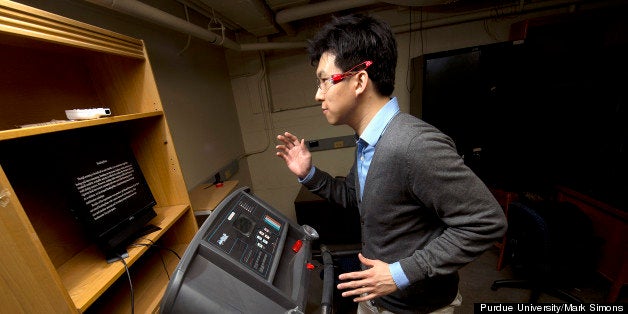
First came the treadmill desk, allowing runners to work and work out at the same time. Though it seemed to be a multitasker's dream, one problem remained: reading while running.
"Not many people can run and read at the same time," Dr. Ji Soo Yi, an assistant professor of industrial engineering at Purdue University, said in a written statement. "This is because the relative location of the eyes to the text is vigorously changing, and our eyes try to constantly adjust to such changes, which is burdensome."
So Yi and a team of researchers came up with ReadingMate, a device that monitors the motion of a runner's head and then adjusts text on a monitor to counteract that movement. As a result, the text appears still.
According to Runner's World, here's how it works:
The runner wears a pair of goggles with infrared LEDs, an infrared camera captures the up-and-down movement of the LEDs (and, hence, the runner's eyes), and the screen display is moved up and down just enough and in just the right way to allow the brain's natural compensation mechanisms to function, the team says.
"Our eyes can accommodate vibration to a certain degree," Yi said in the statement. "There are compensatory reflex mechanisms that tend to stabilize the head and eyes to maintain gaze and head position ... So you have to account for that compensation by moving the text slightly out of synch with the head motion."
The researchers asked 15 students to count letters while running on a treadmill and using the device. Specifically, the students counted how many times the letter F showed up in lines of text displayed on the device's computer monitor.
What did the researchers find? Students who used the device showed a higher accuracy in their letter-count than those in a control group.
"We also measured whether participants gave up on counting the letters because the task was too difficult," study co-author Bum chul Kwon, a doctorial student at the university, said in a written statement. "We often saw people giving up without ReadingMate, especially with certain font sizes and smaller spaces between lines."
Problem solved. This study was published online on April 10, 2013 in Human Factors: The Journal of the Human Factors and Ergonomics Society.

